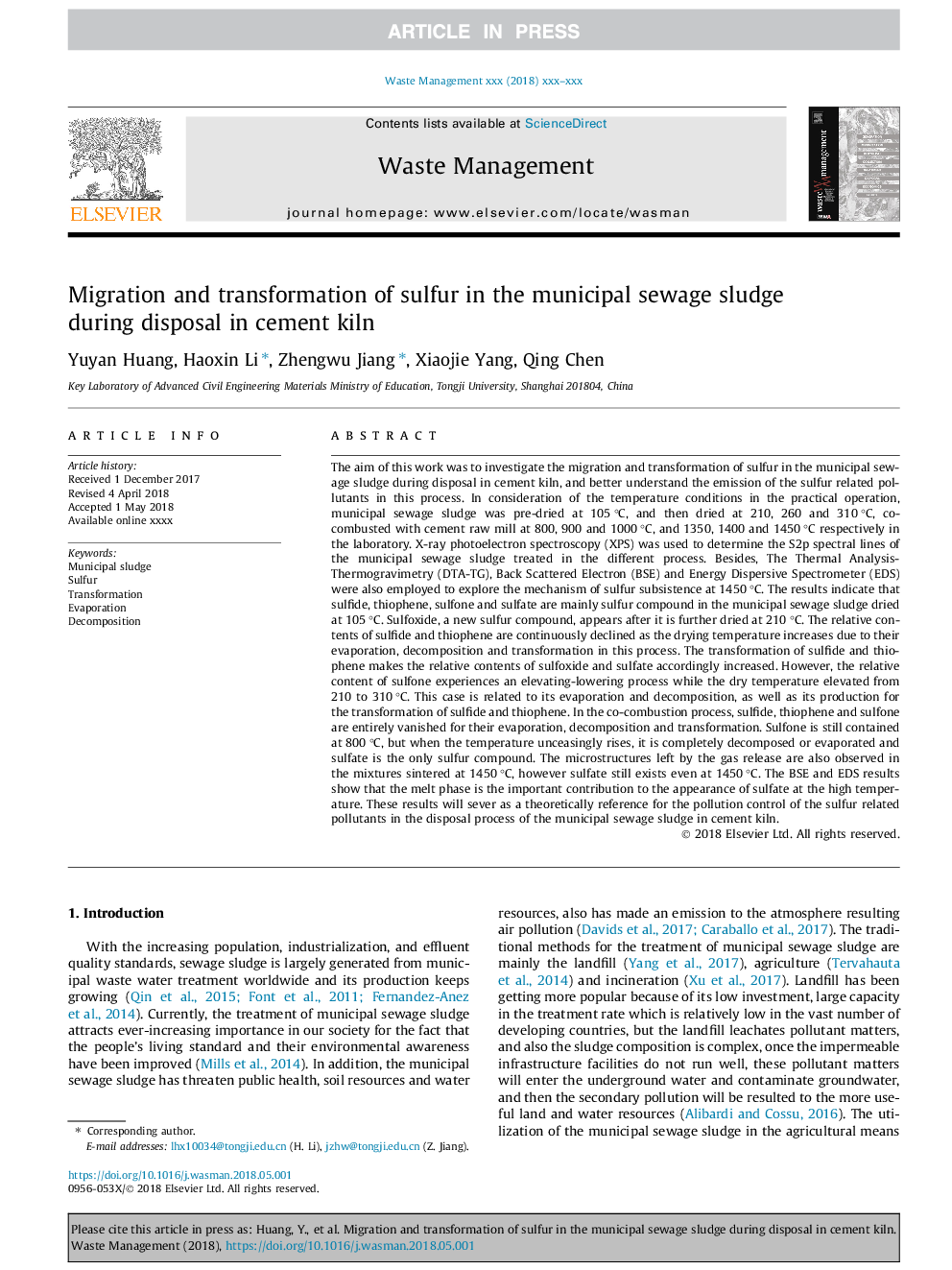| کد مقاله | کد نشریه | سال انتشار | مقاله انگلیسی | نسخه تمام متن |
|---|---|---|---|---|
| 8869722 | 1622609 | 2018 | 8 صفحه PDF | دانلود رایگان |
عنوان انگلیسی مقاله ISI
Migration and transformation of sulfur in the municipal sewage sludge during disposal in cement kiln
ترجمه فارسی عنوان
مهاجرت و انتقال گوگرد در لجن فاضلاب شهری در هنگام دفع در سیمان
دانلود مقاله + سفارش ترجمه
دانلود مقاله ISI انگلیسی
رایگان برای ایرانیان
کلمات کلیدی
لجن شهری، گوگرد، دگرگونی، تبخیر، تجزیه،
موضوعات مرتبط
مهندسی و علوم پایه
علوم زمین و سیارات
مهندسی ژئوتکنیک و زمین شناسی مهندسی
چکیده انگلیسی
The aim of this work was to investigate the migration and transformation of sulfur in the municipal sewage sludge during disposal in cement kiln, and better understand the emission of the sulfur related pollutants in this process. In consideration of the temperature conditions in the practical operation, municipal sewage sludge was pre-dried at 105â¯Â°C, and then dried at 210, 260 and 310â¯Â°C, co-combusted with cement raw mill at 800, 900 and 1000â¯Â°C, and 1350, 1400 and 1450â¯Â°C respectively in the laboratory. X-ray photoelectron spectroscopy (XPS) was used to determine the S2p spectral lines of the municipal sewage sludge treated in the different process. Besides, The Thermal Analysis-Thermogravimetry (DTA-TG), Back Scattered Electron (BSE) and Energy Dispersive Spectrometer (EDS) were also employed to explore the mechanism of sulfur subsistence at 1450â¯Â°C. The results indicate that sulfide, thiophene, sulfone and sulfate are mainly sulfur compound in the municipal sewage sludge dried at 105â¯Â°C. Sulfoxide, a new sulfur compound, appears after it is further dried at 210â¯Â°C. The relative contents of sulfide and thiophene are continuously declined as the drying temperature increases due to their evaporation, decomposition and transformation in this process. The transformation of sulfide and thiophene makes the relative contents of sulfoxide and sulfate accordingly increased. However, the relative content of sulfone experiences an elevating-lowering process while the dry temperature elevated from 210 to 310â¯Â°C. This case is related to its evaporation and decomposition, as well as its production for the transformation of sulfide and thiophene. In the co-combustion process, sulfide, thiophene and sulfone are entirely vanished for their evaporation, decomposition and transformation. Sulfone is still contained at 800â¯Â°C, but when the temperature unceasingly rises, it is completely decomposed or evaporated and sulfate is the only sulfur compound. The microstructures left by the gas release are also observed in the mixtures sintered at 1450â¯Â°C, however sulfate still exists even at 1450â¯Â°C. The BSE and EDS results show that the melt phase is the important contribution to the appearance of sulfate at the high temperature. These results will sever as a theoretically reference for the pollution control of the sulfur related pollutants in the disposal process of the municipal sewage sludge in cement kiln.
ناشر
Database: Elsevier - ScienceDirect (ساینس دایرکت)
Journal: Waste Management - Volume 77, July 2018, Pages 537-544
Journal: Waste Management - Volume 77, July 2018, Pages 537-544
نویسندگان
Yuyan Huang, Haoxin Li, Zhengwu Jiang, Xiaojie Yang, Qing Chen,
